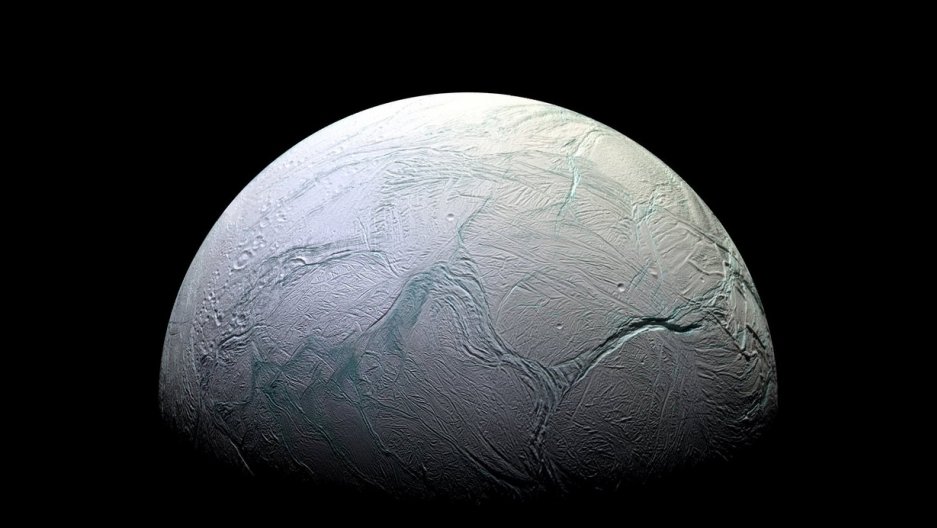Enceladus’ Turbulent Past: Sixth Moon Of Saturn May Have Once Tipped Over

– Enceladus, the sixth moon of Saturn is a very interesting faraway, celestial object.
Not long ago, researchers who studied Enceladus showed that plumes of vapor continuously escaping from cracks in the moon’s icy shell are rich in molecular hydrogen.
It indicates that there are very promising conditions for life in Enceladus’s subsurface sea.
Now, according to most recent research from NASA’s Cassini mission, there is evidence that the moon’s spin axis – the line through the north and south poles – has reoriented.
It probably happened in the distant past due to a collision with a smaller body, such as an asteroid.
Examining the moon’s features, astronomers from from Cornell University, the University of Texas and NASA showed that Enceladus appears to have tipped away from its original axis by about 55 degrees — more than halfway toward rolling completely onto its side.
“We found a chain of low areas, or basins, that trace a belt across the moon’s surface that we believe are the fossil remnants of an earlier, previous equator and poles,” said Radwan Tajeddine, a Cassini imaging team associate at Cornell University, Ithaca, New York, and lead author of the paper.
The area around the icy moon’s current south pole is a geologically active region where long – about 80 miles long and a little over a mile wide – linear fractures referred to as tiger stripes slice across the surface. Tajeddine and colleagues speculate that an asteroid may have struck the region in the past when it was closer to the equator.
“The geological activity in this terrain is unlikely to have been initiated by internal processes.” Tajeddine said. “We think that, in order to drive such a large reorientation of the moon, it’s possible that an impact was behind the formation of this anomalous terrain.”
After this asteroid blow, it took long time for Enceladus to recover; it remained for a long time unsteady and wobbly until it finally re-established its stability. The process, however, likely took over a million years. To do that, the north-south axis needed to change — a mechanism called “true polar wander.”
Enceladus’ topographic and geological features can be explained through geophysical processes, but the moon’s north and south poles are quite different. The south is active and geologically young, while the north is covered in craters and appears much older.
“The differences Cassini has observed between the north and south poles remains peculiar. “Originally, the poles of Enceladus would have been the same, more or less, before true polar wander occurred. The true polar wander hypothesis seems very plausible when we take a combined look at the patterns of highs and lows across the moon’s surface, the physical appearance of surface features and the differences between the current poles.”
Research is published in Icarus.
NASA



 Creators of mankind
Creators of mankind Description of “Tall white aliens”
Description of “Tall white aliens” Where they came from?
Where they came from? About hostile civilizations
About hostile civilizations The war for the Earth
The war for the Earth “Tall white aliens” about eternal life
“Tall white aliens” about eternal life Video: “Nordic aliens”
Video: “Nordic aliens” Aliens
Aliens Alien encounters
Alien encounters The aliens base
The aliens base UFO
UFO Technology UFO
Technology UFO Underground civilization
Underground civilization Ancient alien artifacts
Ancient alien artifacts Military and UFO
Military and UFO Mysteries and hypotheses
Mysteries and hypotheses Scientific facts
Scientific facts


















